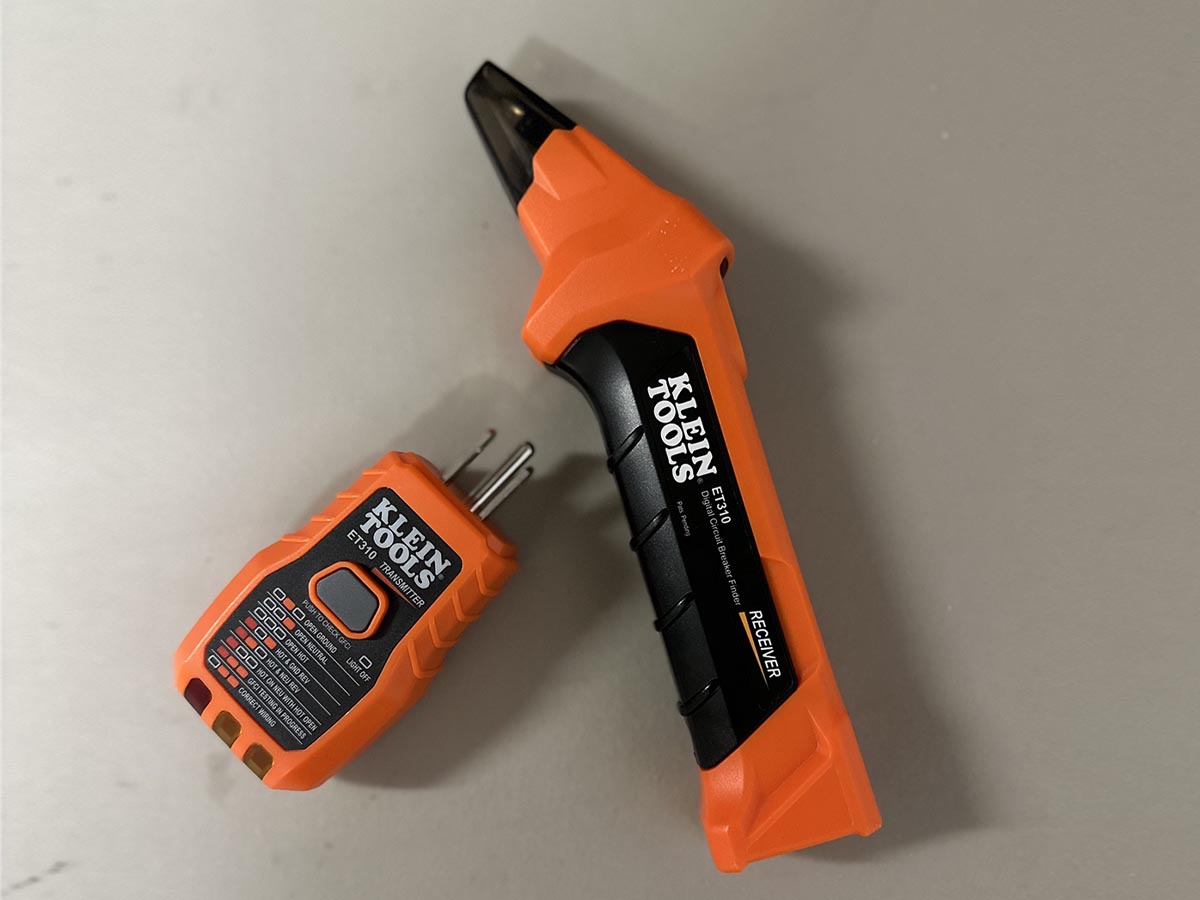We may earn revenue from the products available on this page and participate in affiliate programs. Learn More ›
Any circuit-breaker finder worth its salt should be able to accurately match the circuit breakers on an electrical panel to their respective outlets. What sets the Klein ET310 apart is how easy it makes this process.
In a test with nine other circuit-breaker finders, the Klein model outperformed them with its ease of use, ability to reliably match circuit breakers to outlets, and useful extras.
I put the Klein ET310 to the test on a standard electrical panel by attempting to match more than a dozen different circuits. I started with circuits close to the electrical panel before expanding outward to outlets in the farther reaches of my house.
I also tested the ET310’s additional features, including its ability to identify faulty wiring and test GFCI outlets. The ET310 also underwent a toughness test, during which I repeatedly dropped it on a concrete garage floor from waist height.
Not only did the Klein ET310 reliably match circuit breakers with their corresponding outlets, but it was also easier to use and offered more functions than other similarly priced circuit-breaker finders.
Klein Tools ET310 Digital Circuit-Breaker Finder: At a Glance
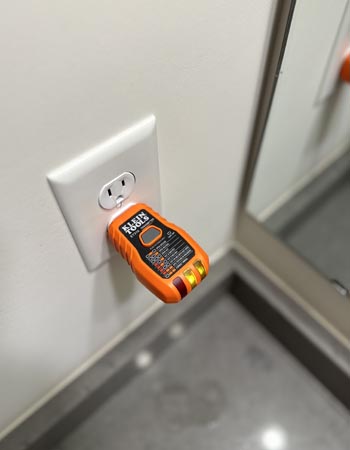
Rating: 9/10
PROS
- Intermittent beeping makes it easy to locate matching circuit breakers
- Offers the ability to check for faulty wiring in outlets and test GFCI outlets
- Receiver’s ergonomic shape makes it easy to scan electrical panels
CONS
- 120-volt limit makes it unsuitable for identifying dryer and oven circuit breakers
- Location of power button makes it easy to turn on accidentally
- Doesn’t include any adapters for testing bare wires or light sockets
Get the Klein ET310 at:
What is the Klein ET310 circuit-breaker finder?
The ET310 circuit-breaker finder helps homeowners match outlets, light sockets, and bare wires throughout their homes to the corresponding circuit breakers on their electrical panels. In order to test bare wires and sockets, however, the user will need an optional accessory kit.
The tool works similarly to other circuit-breaker finders. It comes with a transmitter that plugs into a standard three-prong outlet and sends a signal to the electrical panel. When the receiver is held over the matching breaker on the electrical panel, it emits a tone and illuminates an LED light.
In addition to its ability to match sockets with circuit breakers, the ET310 also functions as a GFCI tester and faulty-wiring detector. Pushing a button on the transmitter creates a brief surge in the line that trips the outlet’s built-in fuse, letting the user know if it’s working properly.
The transmitter also functions as a faulty-wiring indicator that identifies reversed wiring, missed grounds, and open hots (hot wires that do not connect to the power source) via a three-LED light code. While there are many circuit-breaker finders capable of those tasks, what makes the Klein stand out is its user-friendly design and ability to match outlets and circuit breakers with a high level of accuracy.
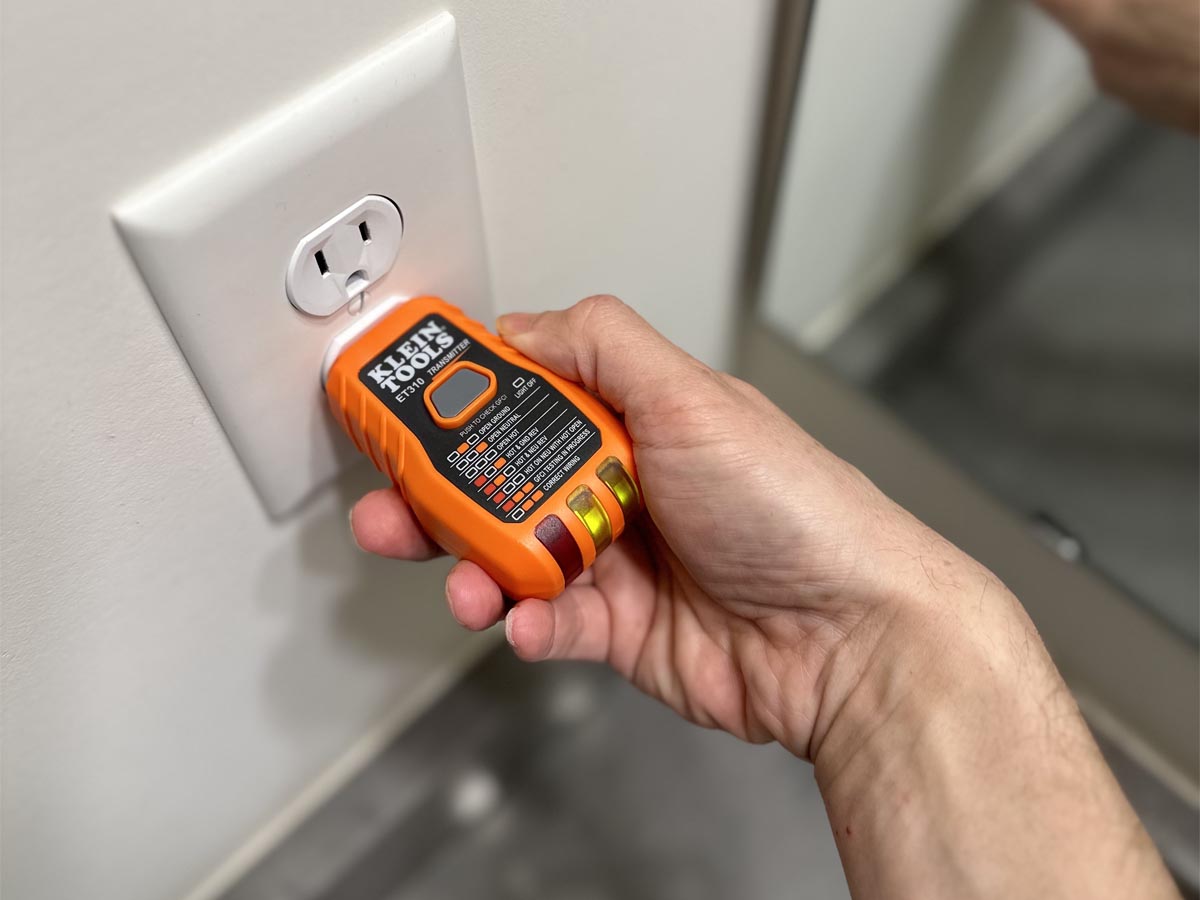
Is the Klein ET310 easy to set up?
Setting up the Klein ET310 is fairly easy. The transmitter plugs into any standard three-prong 120-volt outlet. From there, the transmitter sends a signal to the electrical panel through the home’s wiring.
Since the ET310 uses an automatic receiver, I first had to sweep the receiver over each breaker on the panel so it could “learn” the electrical panel. As I performed the sweep, the receiver automatically adjusted its sensitivity to eliminate false positives. A second scan of the panel revealed the matching breaker.
While the auto sensitivity feature makes the ET310 easy to use, having to complete this prescan before matching each circuit breaker can be tedious, especially when matching a lot of outlets and breakers. Those who are used to using a circuit-breaker finder may prefer a model that lets them adjust the sensitivity manually.
Is the Klein ET310 easy to use?
While a user doesn’t need to be an electrician to use a basic circuit-breaker finder, some of these tools are easier to operate than others. Breakers adjacent to the correct one can set off the receiver, making it difficult to identify the right one.
The ET310, however, makes locating matching circuit breakers fairly simple by using a series of beeps and colored LED lights. The receiver let me know I was getting close by beeping more rapidly as I approached it. This “you’re getting hotter” design made it easier to rule out erroneous breakers and ultimately zero in on the correct one during my tests.
The curved ergonomic shape of the receiver’s head also made it easier to perform scans. Many circuit-breaker finders have a straight head, which makes it more difficult to hold the receiver in position while scanning along the board. The angled head on the ET310 makes it easier to get good contact with each breaker. Klein also wisely puts an LED indicator light on the back of the head, making it easy to read from behind the receiver.
The receiver’s grip fits nicely in hand with the power/reset button right under the thumb, making it easy to turn the receiver off, on, or reset it. However, users will want to note that this location makes it rather easy to switch on accidentally.
The Klein’s other functions are also intuitive and easy to use. The transmitter has a large button for quickly testing GFCI circuits, a function that worked reliably during my testing. I liked that it displayed the status of the outlet’s wiring via its three LED lights as soon as I plugged it in.
There’s also a three-prong outlet on the back of the receiver that I could connect to the transmitter when I wasn’t using it, which is a great feature for those who are inclined to misplace things.
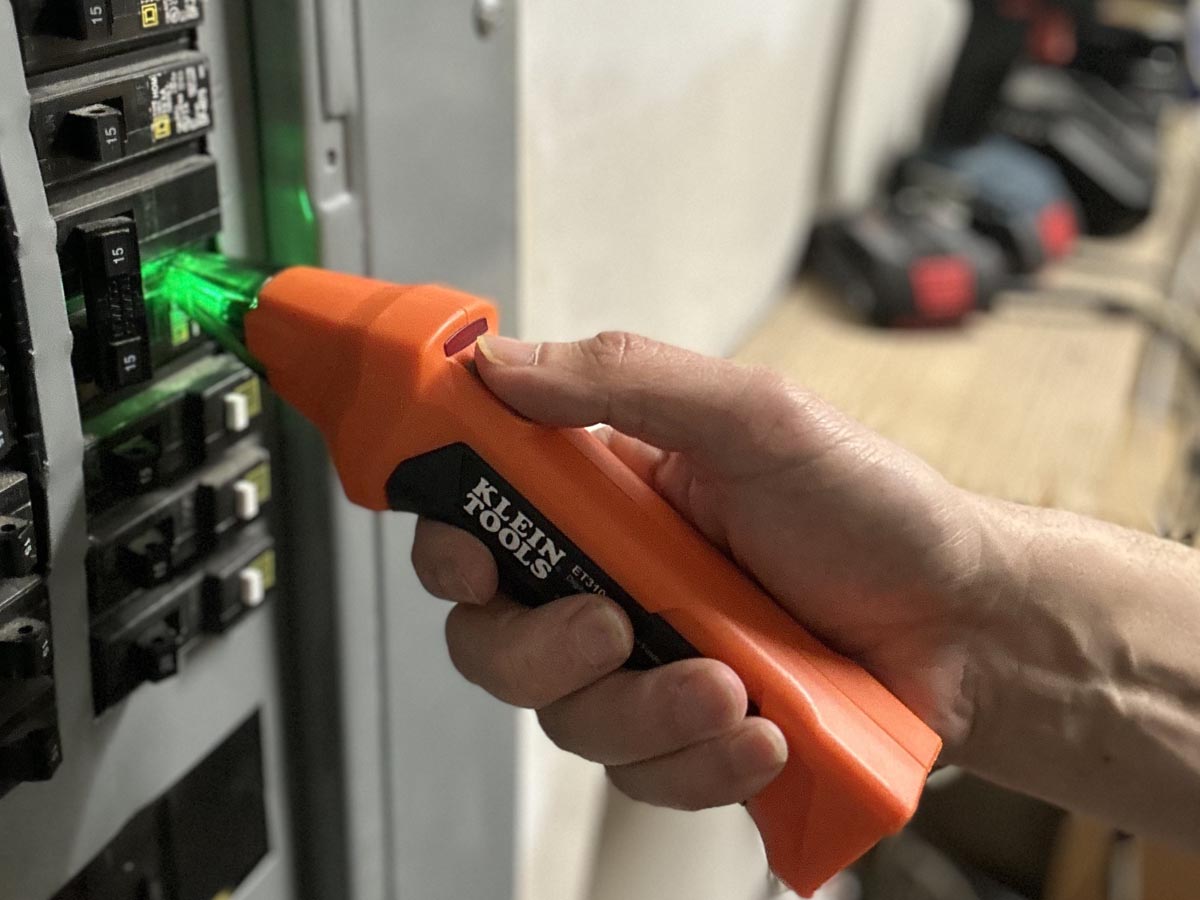
How well does the Klein ET310 work?
A circuit-breaker finder is only as good as its ability to match breakers accurately to their corresponding outlets. In that capacity, the Klein ET310 excels. I conducted more than a dozen different tests using outlets close to the electrical panel and those in the far reaches of my home.
For each test, I covered the descriptions on the electrical box door to ensure I was guided only by the receiver’s beeps and LED indicator (and not the labels on the panel). The Klein ET310 was consistent with each outlet I tested. It begins beeping more rapidly within a circuit breaker or two of the match. When it hits the matching breaker, the green LED light turns red, and the beeping changes to a single tone.
During my tests, it had no problem tripping my GFCI circuits, confirming that they were operating correctly. While I could not test the transmitter on faulty wiring, the Klein confirmed that the wiring in the outlets I tested was sound.
How durable is the Klein ET310?
Circuit-breaker finders, like most tools, will be subject to some level of abuse. Any good tool should be able to withstand being knocked around in a tool box or occasionally dropped on a hard floor.
I tested the ET310’s durability by repeatedly dropping it from waist height onto my hard concrete garage floor. While it suffered a few cosmetic scratches, it emerged largely unscathed, which is a testament to its solid construction. Based on the sturdy overall feel of the receiver and transmitter, I believe it would have to fall from much greater heights to suffer catastrophic damage.
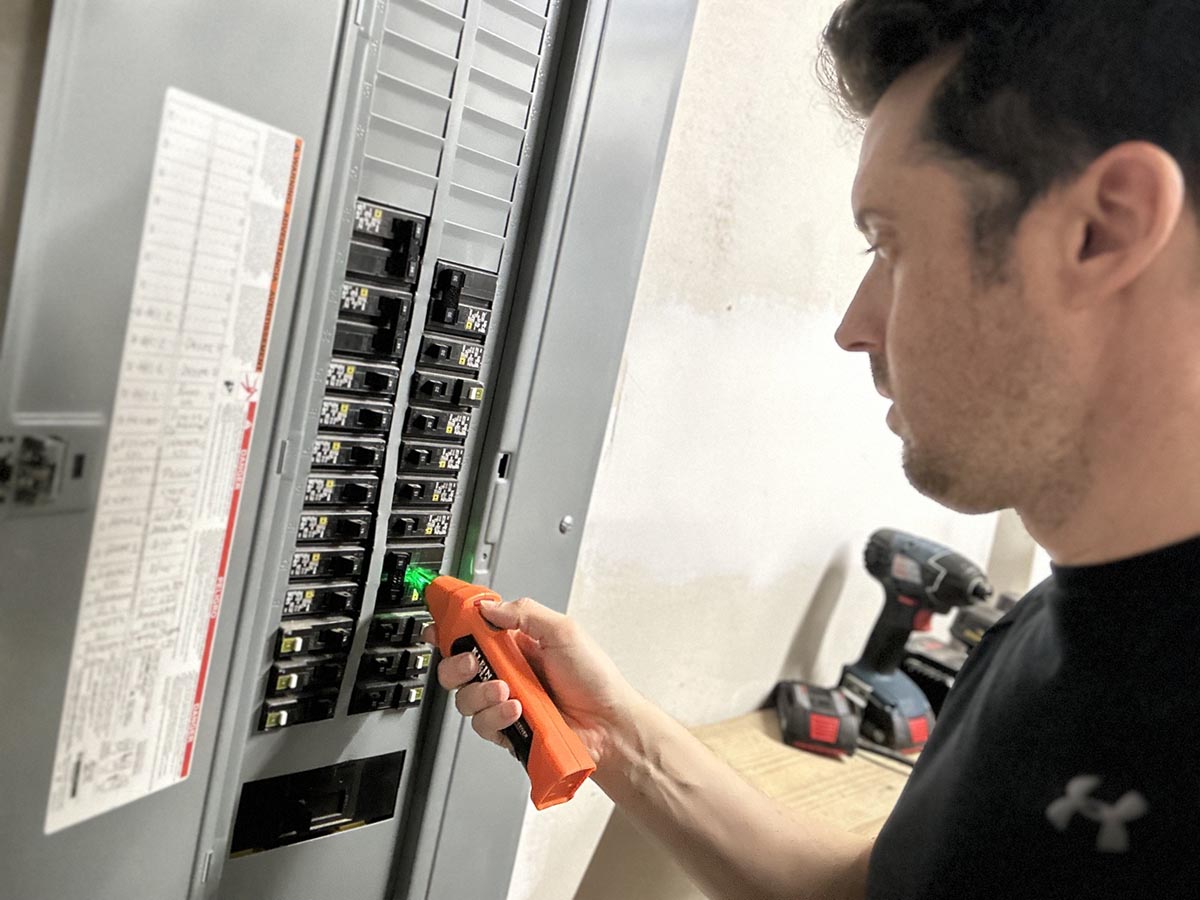
Is the Klein ET310 worth the money?
Circuit-breaker finders for homeowners come in a fairly wide price range from as little as $30 to more than $100. While the Klein ET310 isn’t the cheapest circuit-breaker finder on the market, it is among the most affordable. It’s also easy to use and accurately matches breakers to their corresponding outlets. Plus, it includes additional functions for testing GFCI circuits and identifying faulty wiring, which is something not found on most circuit-breaker finders at this price point. These qualities make the ET310 an excellent circuit-breaker finder for the money.
Is the Klein ET310 right for you?
The Klein ET310 is an excellent tool for those who want to take the guesswork out of matching circuit breakers to outlets. The ET310 is accurate and requires very little expertise to use competently. I also loved that the ET310 allowed me to perform other functions while matching circuit breakers, including testing GFCI outlets and identifying potentially dangerous wiring issues.
Despite these pros, the ET310 does have its limitations. While most DIYers will appreciate its auto sensitivity, those with more experience may prefer a circuit-breaker finder that allows them to adjust the sensitivity manually. The ET310 also only tests circuits up to 120 volts. While this covers the majority of outlets, lights, sockets, and other electrical connections in one’s home, it won’t work with the 220-volt outlets that ovens, dryers, and air-conditioning units use. Those who need to test higher-voltage wiring will want to upgrade to a pro-level circuit-breaker finder.
Where to Buy the Klein ET310 Digital Circuit-Breaker Finder
Get the Klein ET310 at:
Meet the Tester
Tony Carrick is a freelance writer specializing in home improvement, landscaping, technology, home security, and design. His articles have been featured on such sites as Angi, Popular Science, Futurism, 360 Reviews by U.S. News & World Report, Domino, and more. Carrick has conducted rigorous product testing on everything from power tools to home security systems to backyard grills. With each review, his goal is to help readers determine whether a product meets their needs and if it is or isn’t worth its price tag.

